Prøve GULL - Gratis
GOING WITH YOUR GUT
Muse Science Magazine for Kids
|Muse January 2025: Invisible Kingdom
HOW DO MICROBES AFFECT OUR HEALTH? LET'S COUNT THE WAYS...

What's your body made of? One answer is trillions of tiny units called cells. A trillion is 1 followed by 12 zeroes, or a million million. These cells work together so you can function as a person. But that's not all. Single-celled organisms also live in and on your body. They're microbes. That means they're too tiny to see with just our eyes. And there are lots of them.
"You have 40 trillion microbes inside you," says Jack Gilbert. He's a microbiologist at the University of California, San Diego. The microbes in our bodies include bacteria and lots of other tiny organisms. They live on skin and in mouths, stomachs, and other parts. But our microbes aren't just along for the ride. They affect our health-for both good and bad. That's especially true for microbes in your gut.
 WHAT GOES ON IN THE GUT?
WHAT GOES ON IN THE GUT? When you eat, saliva in the mouth starts breaking down food. Most digestion, though, takes place in the gut. Your gut includes all the body's food-processing parts from the stomach on down.
 The stomach churns food around. As that happens, enzymes, acid, and other substances break many of the food's chemical bonds. Food becomes chemical bits and pieces for energy and growth.
The stomach churns food around. As that happens, enzymes, acid, and other substances break many of the food's chemical bonds. Food becomes chemical bits and pieces for energy and growth.The next stop is the small intestine. Here, usable molecules move into the blood, which carries them around the body. Leftover material goes into the large intestine. That organ pulls out extra water and other chemical bits. Unused stuff becomes feces, or poop.
Our guts get help for all this work from microbesmainly bacteria. Many of those bacteria make chemicals that break apart parts of foods like fruits and vegetables.
Denne historien er fra Muse January 2025: Invisible Kingdom-utgaven av Muse Science Magazine for Kids.
Abonner på Magzter GOLD for å få tilgang til tusenvis av kuraterte premiumhistorier og over 9000 magasiner og aviser.
Allerede abonnent? Logg på
FLERE HISTORIER FRA Muse Science Magazine for Kids
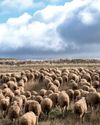
Muse Science Magazine for Kids
ANIMAL FIREFIGHTER TO THE RESCUE
Can animals help manage the risks of deadly wildfires?
3 mins
Muse July 2025: The Story Behind Wildfires

Muse Science Magazine for Kids
FIRE DANGER
WHY THE RISK OF WILDFIRES KEEPS GROWING
4 mins
Muse July 2025: The Story Behind Wildfires
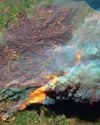
Muse Science Magazine for Kids
The Miller NEW Normal
WHAT TODAY’S WILDFIRES TELL US ABOUT OUR FUTURE
8 mins
Muse July 2025: The Story Behind Wildfires
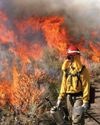
Muse Science Magazine for Kids
WOMEN AND FIREFIGHTING: A GOOD FIT
Jessica Gardetto is a firefighter. Her father was, too. “I grew up with my dad coming home smelling like wildfire and covered in soot,” she says.
1 min
Muse July 2025: The Story Behind Wildfires

Muse Science Magazine for Kids
What is happening on your fingertips when they get all wrinkly in a hot tub?
—Felix G., age 10, Montana
1 mins
Muse July 2025: The Story Behind Wildfires

Muse Science Magazine for Kids
WHEN the SMOKE CLEARS
THE LINGERING EFFECTS OF THE RECENT PACIFIC PALISADES AND ALTADENA EATON FIRES
6 mins
Muse July 2025: The Story Behind Wildfires

Muse Science Magazine for Kids
PICKING TEAMS
Keep it fair with a strategy that relies on geometry.
2 mins
Muse July 2025: The Story Behind Wildfires
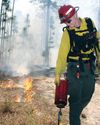
Muse Science Magazine for Kids
SHAN CAMMACK
WILDLIFE BIOLOGIST AND FIRE SAFETY OFFICER
3 mins
Muse July 2025: The Story Behind Wildfires
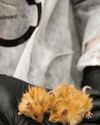
Muse Science Magazine for Kids
Scientists Create Mice With Woolly Mammoth-Like Fur
RESEARCHERS AT A COMPANY IN TEXAS ARE WORKING TO CREATE A LIVING ANIMAL THAT RESEMBLES THE EXTINCT WOOLLY MAMMOTH. Recently, they produced mice with traits of the large mammal. The mice all have coats with mammoth-like fur, and some of the small mammals also have genes that help them store fat. Both features would help the animals survive in the cold Arctic, where the woolly mammoth once lived.
1 min
Muse July 2025: The Story Behind Wildfires
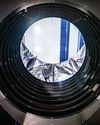
Muse Science Magazine for Kids
Cool Sunshade Added to the Nancy Roman Space Telescope
THE NANCY ROMAN SPACE TELESCOPE IS A NEW TELESCOPE THAT NASA IS BUILDING AND WILL LAUNCH INTO SPACE, LIKELY IN EARLY 2027.
1 min
Muse July 2025: The Story Behind Wildfires
Listen
Translate
Change font size

